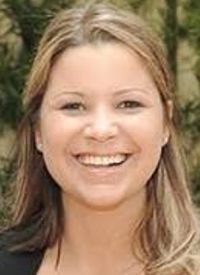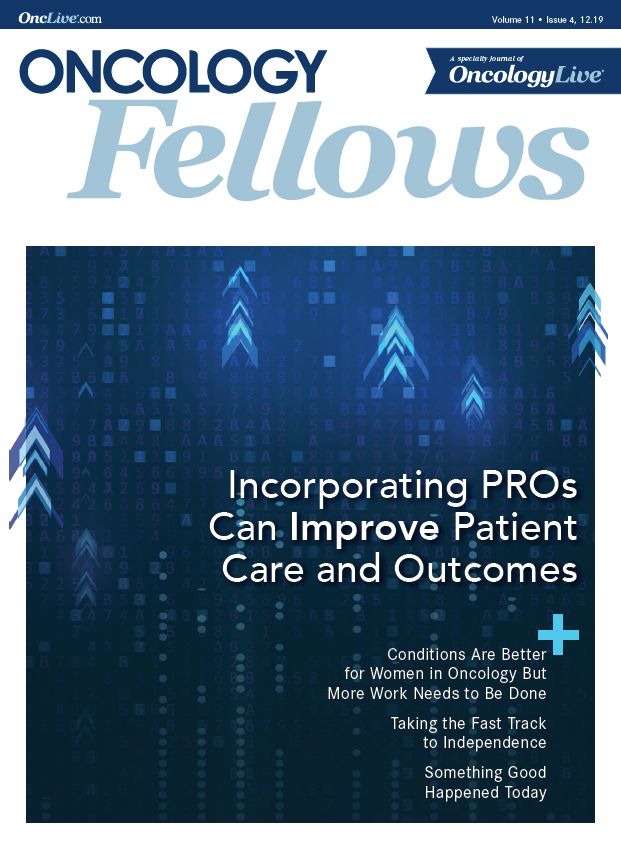Publication
Article
Oncology Fellows
Fellows Take Top Prizes in OncLive Innovation Challenge
Author(s):
A pair of fellows will be able to advance their innovative technology-based projects thanks to the OncLive® Innovation Challenge: Innovative Technology in Cancer Care.
Juliet Wolford, MD, a gynecologic oncology fellow at the University of California, Irvine

Juliet Wolford, MD
A pair of fellows will be able to advance their innovative technology-based projects thanks to the OncLive® Innovation Challenge: Innovative Technology in Cancer Care.
Juliet Wolford, MD, a gynecologic oncology fellow at the University of California, Irvine (UC Irvine), won the top prize of $15,000 for her proposal to construct 3-D-printed speculums in Tanzania. Francesco Maura, MD, a fellow in the myeloma service at Memorial Sloan Kettering Cancer Center, took second place and $7500 for his plan to develop a machine learning approach to quantify a patient’s risk for melanoma and likely response to treatment.
“I was very impressed that our top 2 winners were fellows,” said Reshma Mahtani, DO, one of the judges for the challenge and an associate professor of medicine at the University of Miami’s Sylvester Comprehensive Cancer Center, in Florida. “It just speaks to where we’re headed [in cancer care] and how bright our future is.”
The Innovation Challenge charged contestants with combining technology and oncology to create a product to improve clinical practice and/or patient outcomes. Participants uploaded their proposals to the OncLive.com website, and visitors could vote for their favorite project. Six finalists were then invited to give a 5-minute presentation, which was followed by a 5-minute question-and-answer session, via online video. All contestants were rated on a 5-point scale for originality, creativity, rationale, and appropriateness.
Wolford proposed using 3-D printers to construct speculums to screen and treat cervical cancer in low-resource nations. Patients in wealthier countries typically go through a 3-step screening and treatment process. A woman first receives a pap smear. If the pap smear is abnormal, she returns for a colposcopy. If the colposcopy finds evidence of grade ≥2 cervical intraepithelial neoplasia (CIN), a precancerous condition on the uterus, the patient returns for treatment.
“That is way too cumbersome for a low-resource setting,” Wolford said.
Healthcare systems in countries that don’t have access to the human papillomavirus vaccine or pathologists to analyze pap smears or biopsy specimens often use visual inspection with acetic acid, a screening and treatment program endorsed by the World Health Organization. If the visual inspection shows any evidence of abnormality, the woman is treated during that visit.
“It’s 1 visit, 1 speculum. You’re screening and treating them,” she said.
The other problem is that speculums can be hard to come by in African nations. UC Irvine physicians tried to bring the devices to the university’s 2 healthcare clinics in Tanzania, but they were confiscated by government agents. “You have to go [through] this approval process to get them back, and [you have to] pay fees, so it ends up being a long process,” Wolford said.
Most of her prize money will go toward getting 3-D printers into those clinics. In the pilot study, investigators used filament that cost $25/kg. The speculums cost about $2.34 apiece to make, including the cost of the $350 printer.
Wolford said she would like to work with ReFab Dar, a global nonprofit that has developed a system to recycle waste plastic into 3-D printer filament, to keep costs down. ReFab Dar is established in Tanzania, where filament can cost as much as $80/kg, including shipping costs from China. Ultimately, she wants to see local providers create their own filament from recycled plastic as well as a self-sustaining system for printing any medical tool.
Mahtani called the project “spot-on” for improving access and outcomes for patients, and praised Wolford for the proposal’s originality.
“Instead of using things that we would have normally thought of as technology, like an app or some sort of computer-based algorithm, she used a 3-D printer,” Mahtani said. “That’s clearly technology and that’s something that I’m hearing about from my kids because it’s in their school.
“I was blown away. I said, ‘Wow. I would have never thought of that.’ It was really, really original,” she added. “This project was intended to use technology to improve outcomes for patients with cancer, and this fulfilled that criteria so clearly, and she presented it so eloquently and with such passion that it was an easy choice.”
Harnessing Artificial Intelligence to Improve Care
Maura said he recognized the value of next-generation sequencing (NGS), particularly whole genome sequencing, while working on the Wellcome Sanger Institute’s Cancer Genome Project. NGS, he said, can decipher the biology and pathogenesis of different hematological cancers and improve current clinical practice.
The combination of cancer genomic background and patient performance status are the key elements to define the best treatment option and predict clinical outcome. Maura noted that multiple myeloma survival has dramatically improved over the last several years thanks to the introduction of several novel agents, and physicians need to develop accurate models that can predict outcomes and support therapeutic decisions.
He developed a machine-learning algorithm to create an estimated quantitative risk assessment for each patient. The algorithm also can identify which patients are most likely to benefit from a certain treatment, thereby increasing efficacy and reducing toxicity.
“Physicians are struggling to learn how to prognosticate for patients,” Mahtani said. “This algorithm took different chromosomal abnormalities and mutations that were present in patients with multiple myeloma and was able to give the physician caring for those patients a retrospective look at how that patient may do.”
Judges were looking for ideas that could be implemented sooner rather than later, and both projects should be ready to go within a matter of months. “These monies, we really wanted to see [them] going to immediate use rather than going into a fund for use years later,” Mahtani said.
























%20(2)%201-Recovered-Recovered-Recovered-Recovered-Recovered-Recovered-Recovered-Recovered-Recovered-Recovered-Recovered-Recovered-Recovered-Recovered-Recovered-Recovered-Recovered.jpg?fit=crop&auto=format)
%20(2)%201-Recovered-Recovered-Recovered-Recovered-Recovered-Recovered-Recovered-Recovered-Recovered-Recovered-Recovered-Recovered-Recovered-Recovered-Recovered-Recovered-Recovered.jpg?fit=crop&auto=format)
